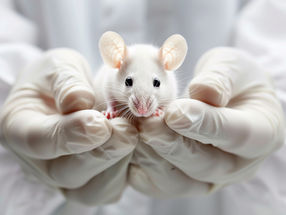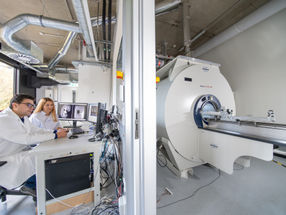Maths can carry weight in the battle against obesity
A study at the Biometris group of Wageningen UR shows that the ‘drive’ to lose weight peaks several months before people actually start following a diet in practice, while it is low a few months before they stop dieting. The scientists used a mathematical computer model that combines all kinds of stimuli to increase or diminish food intake, indicated by the term ‘drive’. A better understanding of this phenomenon can help with reaching a stable healthy body weight and may prevent the well-known yoyo-effect.
Being overweight is a health risk. Despite the widespread public information campaigns, an increasing number of people fail to match their daily food intake to the actually required average amount. The ample availability of food items, especially in the Western world, clearly plays an important role in this. The simple presence of food for most people is a strong incentive to start eating – self-restraint is required to refrain from doing so, especially if the food looks tasty. Apart from these external influences, the body itself produces chemicals that stimulate or suppress appetite.
The study carried out at Wageningen UR used a mathematical model to describe the process of body weight control. It combines the wide variety of stimuli that make us start or stop eating into a single variable, called the total net ‘drive’ to lose weight. The computer model has been applied to data for two subjects over a period of more than a decade. This shows that the drive in practice is already at a high level several months before an actual diet is started. It then becomes relatively low a couple of months before the same diet is broken off again.
A familiar aspect of weight control is the so called yoyo-effect; after losing a few pounds people are all too prone to fall back into their old ways and quickly pile on the pounds. The process repeats itself but the net effect is a slow and steady increase in body weight, making it ever more difficult to reach an optimal weight. This is called a feedback loop - if it can be controlled, the fluctuations may be diminished or even avoided.
Two months is a long time when following a diet. The outcome of this study indicates that within this period there is the opportunity to make the required corrections. What those corrections should be is beyond the remit of the model, however. A better understanding of the phenomenon may help people acquire a life pattern that contributes to a stable healthy body weight.
Most read news
Organizations
Other news from the department science

Get the life science industry in your inbox
From now on, don't miss a thing: Our newsletter for biotechnology, pharma and life sciences brings you up to date every Tuesday and Thursday. The latest industry news, product highlights and innovations - compact and easy to understand in your inbox. Researched by us so you don't have to.
Most read news
More news from our other portals
Last viewed contents
The European Medicines Agency recommends Orphan Drug Designation of Intravenous CP-4126 for the Treatment of Pancreatic Cancer
Amgen Opens State-of-the-Art Biotechnology Research Campus - 40-Acre Seattle Campus Focuses on Advancing Cancer and Immunology Therapies
Astex ranked in the top 20 of The Sunday Times ARM Tech Track 100
MagForce AG: Dr. Jan zur Hausen elected to the Supervisory Board of MagForce AG
Cytokinetics and Amgen Announce Strategic Alliance in Heart Failure - Amgen Obtains Option on Cytokinetics' Drug Candidate CK-1827452
Christian_Ferdinand_Friedrich_Krauss























































